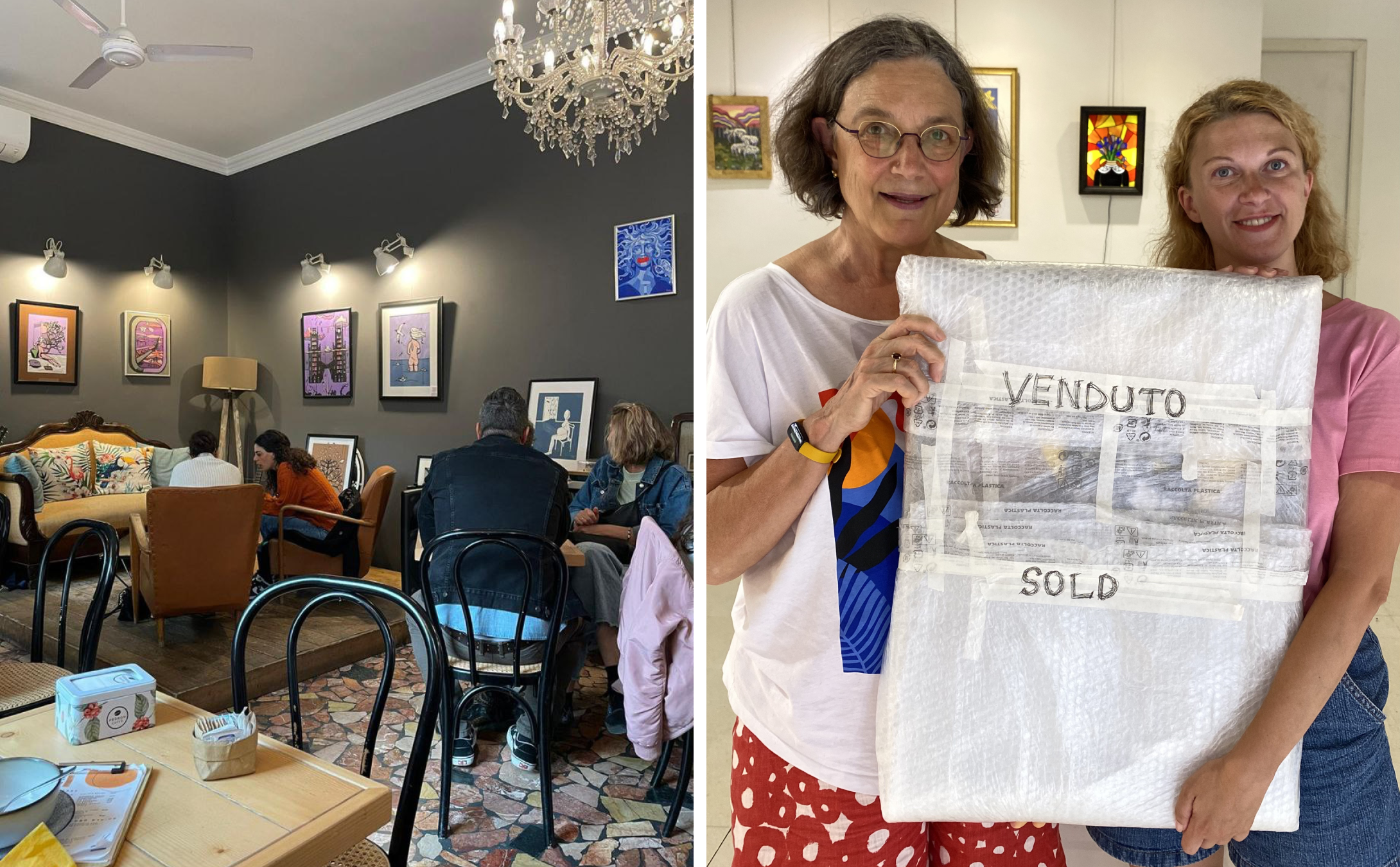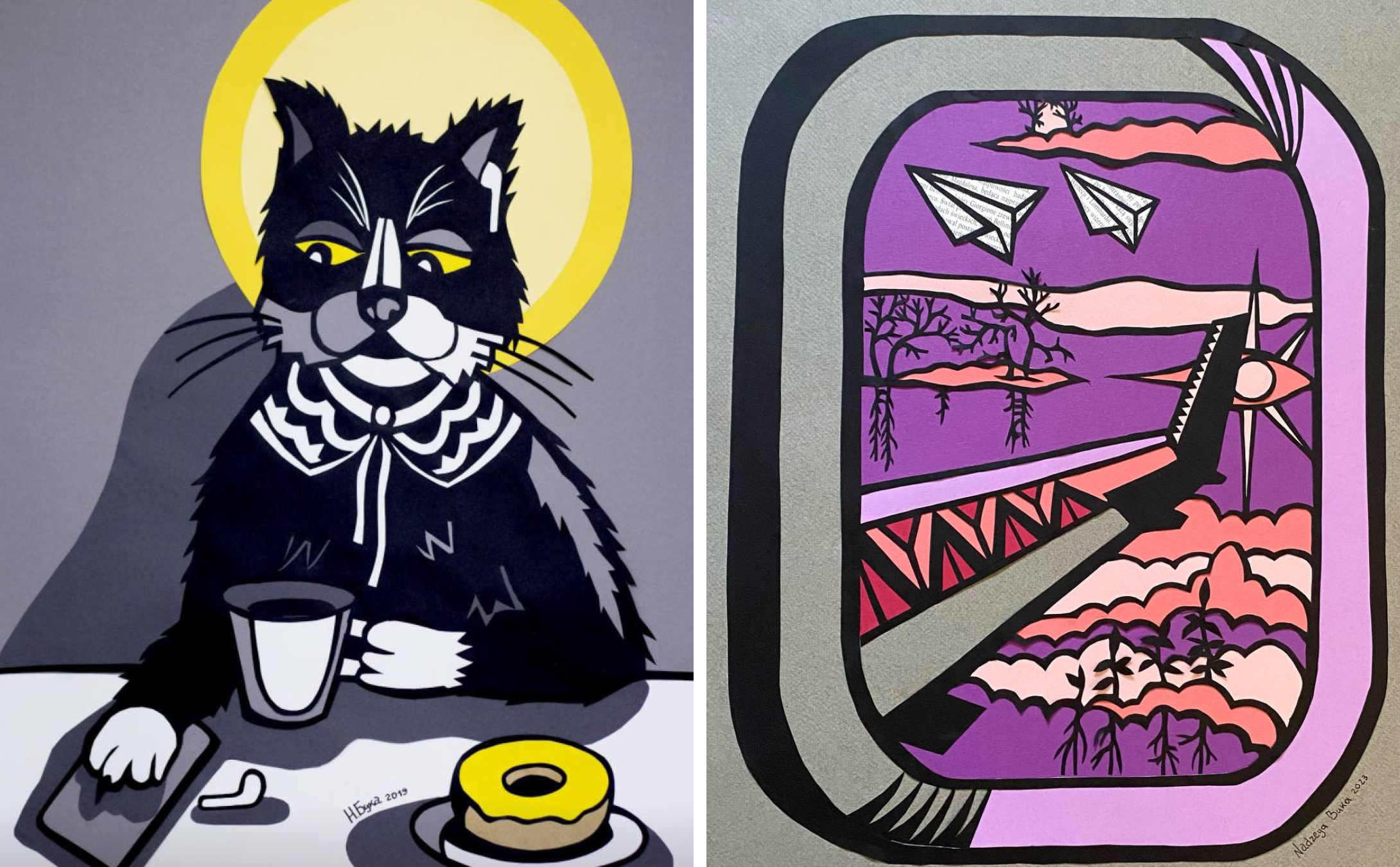The story of Nadzieya Buka is one of an artist who, through her work, not only maintains a connection to her native culture but also forges new paths for the Belarusian voice in the world. Her journey is an example of how, through a combination of artistic courage, professional perseverance, and support from the ArtPower Belarus mobility grant, one can accomplish a major project and reach a new level. In 2023, Nadzieya held a series of exhibitions in Italy. These were not only exhibitions and meetings but also opportunities for new contacts, invitations, and public recognition in Europe. Most importantly, it was a feeling that her art was visible far beyond her homeland.

Nadzieya Buka is a Belarusian artist who has lived and worked in Warsaw for over three years. In her artistic language, she combines the technique of authorial papercutting, painting, and graphic art. Her works, made from colored paper and cut by hand, echo the tradition of Belarusian vycіnanka (papercutting art) but reimagine it in a contemporary context. At the core of her work are symbols, images, and emotions that everyone can interpret in their own way.
Beyond working on her canvases, Nadzieya illustrates books, teaches art to children and adults, and develops her own educational programs. Her daily life is a blend of creative work, teaching, and cultural adaptation in a new country. Yet, as she says, it is through art that her deep connection to Belarus endures.
In 2023, she received a mobility grant from ArtPower Belarus, using the opportunity to organize three exhibitions in Italy — in Pisa, Florence, and Rome. The program’s support covered transportation and living expenses, allowing Nadzieya to focus fully on meaningful work: communicating with the audience, preparing the spaces, and self-organizing.
“If it weren’t for ArtPower Belarus, no one in Italy would have known me as an artist. This was my first grant — and immediately a success. It was a very important step forward,” — shares Nadzieya.
Three Exhibitions — and Five More
The project “Speranza senza paura” (Hope Without Fear) became not just an artistic event but a strong statement of presence. Each exhibition had its own atmosphere, context, and audience. The first took place in Pisa, in a small but cozy space. The second was held in Florence. And the third — the most ambitious — in Rome, in the iconic Trastevere district, where the space intersected with a constant flow of tourists, locals, and the Belarusian diaspora.

In Rome, Nadzieya presented not only her paintings but also her sketches, drafts, and notes for the first time. Visitors were captivated by these glimpses into her creative process. It was also in Rome that the first sale happened during the exhibition: a local resident purchased one of the papercut artworks.
“Every time someone stopped in front of a painting, I felt that it was working. There were so many conversations, so many questions about Belarus, about the meaning of the symbols. One girl even burst into tears in front of a painting depicting Minsk — she, too, was living in exile.”
During the first exhibitions, new connections were established with curators, organizers, and galleries. This made it possible to organize five more exhibitions in other Italian cities — including Verona, Quinzano, and other locations. Some of the artworks continued to be exhibited between events and received additional feedback.
“My paintings didn’t have to ‘sit’ in the studio. They lived with the people — and that’s the most important thing.”
What Did the Audience See?
Among the most powerful and personal pieces presented at the exhibitions was the painting “Impossible to Stay Silent”. It is a striking self-portrait with the artist’s mouth sealed with red tape, but her eyes — vivid and full of emotion — seem to speak in place of the silence. This work, her first created in exile, symbolizes that even when an artist is forbidden to speak openly, their gaze and their art continue to transmit truth, pain, and resistance. The painting evoked strong reactions, especially among those who themselves had experienced silence, fear, and migration.
Across the three exhibitions, 34 works were presented, including: authorial papercuts from colored paper; paintings created in Warsaw; one stained glass artwork.
All exhibitions were free of charge. Specially prepared brochures, informational materials, and printed cards with links to Nadzieya’s Instagram profile and a short biography in Italian were available for visitors.

Impressions, Challenges, and Experience
The greatest challenge for Nadzieya was preparing financial reports:
“I’m a creative person. For me, financial tables are like a foreign language. But thanks to the support and clear guidance from the ArtPower Belarus team, I managed to do it,” she says.
She acknowledges that the experience gave her not just an opportunity to showcase her work, but also:
- a chance to present herself as a Belarusian artist on the international stage;
- new contacts and perspectives;
- and the understanding that art can travel along with the artist.
“A grant is not just money. It’s an opportunity. And if you seize it — the world responds,” says Nadzieya.

What’s Next?
Nadzieya is working on new projects. Her current inspiration draws from nature, philosophy, and the search for spiritual connection with her homeland. In her new works, both abstract imagery and concrete references to Belarusian motifs will appear. She plans to exhibit again in Poland, aiming to show how her voice is evolving in the new space.
“Don’t be afraid. If you don’t knock on the door — it won’t open. But if you do — some will surely open,” she concludes.
This project was made possible with the support of the ArtPower Belarus program, implemented by the Belarusian Council for Culture and the Danish Cultural Institute with funding from the European Union.
Stay tuned — the next edition of the ArtPower Belarus program will be announced soon.

